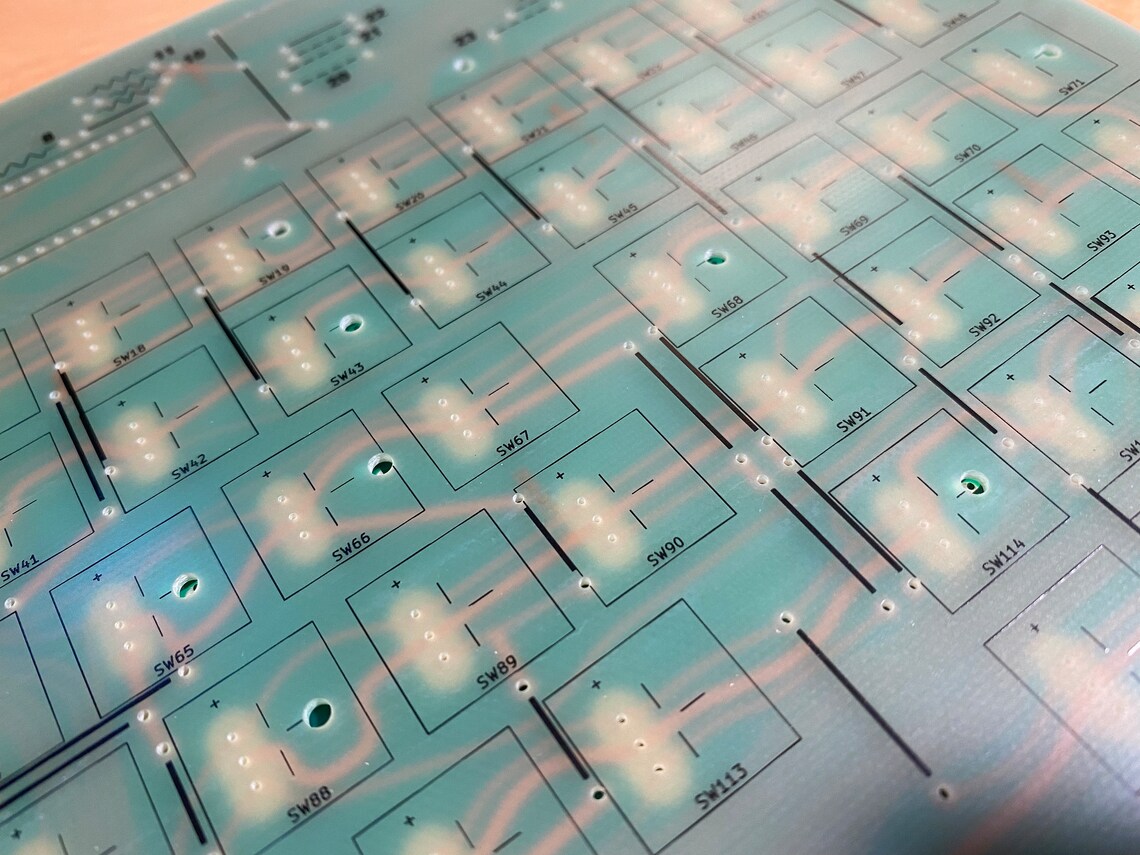Subject: Feasibility of building a Space Cadet using replica PCB?
ArtyomTheMetroHopper wrote: 01 Dec 2022, 09:56
According to the seller it is intended as a "drop in" replacement for the keyboard and is compatible with the original components. This got my layman mind working and curious weather it would be possible to use the pcb to not just replace a pre-existing space cadet pcb but instead use it to make one from scratch.
Hi! I am the creator and seller of the Space Cadet PCB. I am doing exactly what you are asking about, making a Space Cadet keyboard from scratch.
"Feasible" is a subjective word. The most difficult part of the build is sourcing the switches. The board has
122 D Series switches of various models. These switches haven't been manufactured for decades. You can sometimes find them in small numbers on eBay, but they usually sell for $8-$12
per switch. I personally consider $1,572 just for the switches to be infeasible.

The best strategy is to try to find a couple of vintage keyboards that use the same switch.
I'm going a different route. I am trying to create a 3D printable replica of the switches. I have only just started on this part of the project. A few reference switches are on their way to me from eBay. In the end, I might make resin casts of the plastic parts and fabricate the switches that way.
Depending on how you solve the switch problem, you might also need to source Hall sensors. In my case, even the genuine switches I ordered are missing their original Hall sensor. Again, it is possible to occasionally find these sensors in very small numbers on eBay and other places on the internet, but sourcing ~118 of then is probably not feasible by most definitions. The better strategy is to find a modern replacement, of which there are several reasonable options available. I don't know what difficulties, if any, trying to use a modern replacement will present. It might "just work," or it might be a huge hassle.
There are a few possibilities for the keycaps. Signature Plastics sells their own version of the Space Cadet keycaps with MX mounts. This might be the easiest route. You will need an adapter to use MX keycaps on the Micro Switch Series D stems, which use a different mount, but these are easily 3D printed.
If you insist on more accurate caps, you will need to make them yourself. The profile of the keycaps actually isn't anything special. It's the same profile you can find on most Micro Switch keyboards of the era. The hard parts are the legends and the color. My plan is to resin cast the keycaps from keycaps I already have and then laser etch the legends onto the keys. I've done a few experiments that suggests this will work. It probably is not very much cheaper than the Signature Plastics set—especially if you factor in labor—but it will be a bit more true to the original, and I'm just doing it for fun anyway.
The rest of the components are pretty much off-the-shelf electronics components. Personally, I am going to use a modern microcontroller to emulate the original Intel 8048 processor, because I am going to use the keyboard with a modern computer. However, the original source code and binary are available online if you do wish to use the 8048. (You will need a programmer.)
Finally, you need to decide what to do about the enclosure. The Space Cadet keyboard was sold with a variety of different enclosures. I personally don't think any of the original enclosures are particularly beautiful, so I plan on fabricating a simple enclosure of my own design.
If you are a stickler for accurate details, the original keyboard has a daughter board that interfaces with the speaker and holds the external connector. I did not see much point in replicating it, as most people won't be connecting the board to vintage machines, and the people that will want to connect it to a vintage machine will know how to wire their own connector without the daughter board.
